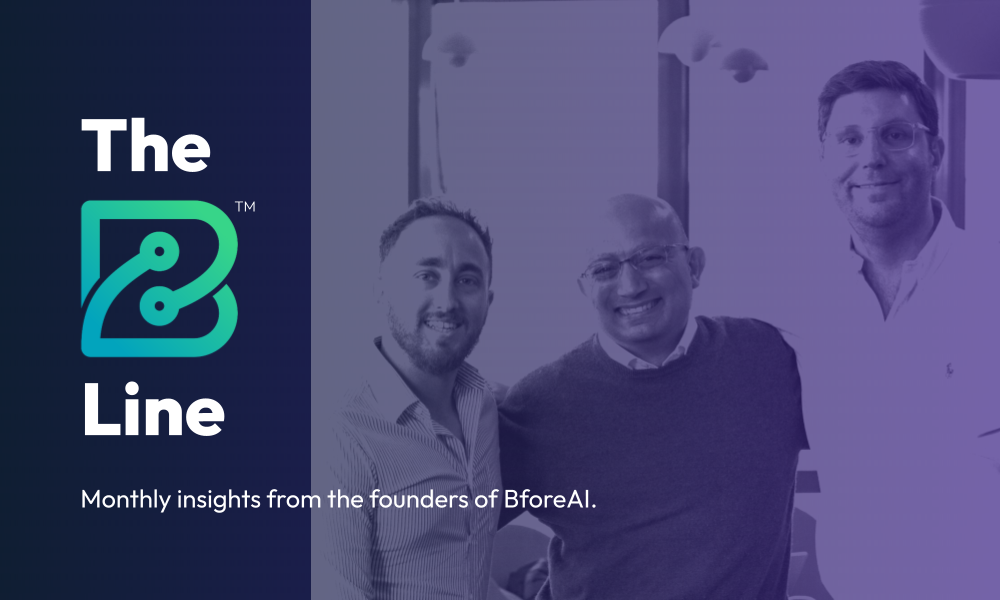Imagine for a moment that you are a futuristic natural resources firefighter. You have deployed an advanced autonomous drone system designed for wildfire prevention in a huge, untapped natural wilderness area that you are assigned to manage. Equipped with state-of-the-art heat and smoke sensors and AI-powered analysis capabilities, these drones hover over the forest, continuously monitoring variables such as tree health, moisture level and changes in temperature.
Suddenly, one of the drones pinpoints a tiny hotspot, indicating a localized fire smoldering underneath the forest canopy. Before visible flames can appear causing the fire to spread, the drone quickly and autonomously extinguishes the sparks before they can expand into a potentially devastating wildfire.
In this scenario, your success as a firefighter is not in your ability to physically see the fire or to put it out yourself. Instead, you have preemptively stopped the wildfire by deploying a system that is built to autonomously identify and address the threat, a system trained to “see” the issue for you and deal with it. You didn’t need to send out teams of firefighters to find the problem and you didn’t have to dispatch them to fight a dangerous inferno, either.
This preemptive technology achieves two things for you as a firefighter:
- It solves the problems of both visibility and prevention of a problem you can’t see and,
- It does the work for you, reducing the need for manual analysis and costly reactive measures.
In short, it presents a scenario in which technology is working FOR you…not the other way around.
Now back to reality. In real life, you are a cybersecurity professional tasked with monitoring an ever-expanding network of on-prem and cloud systems, not to mention external assets like URLs and executive social media profiles. On top of this, most of the platforms and tools cyber teams use require constant hands-on management, tuning, and manual response. How do you work less, when there is so much to manage? Is the promise of technology working for you just a dream?
The conventional approach: Are you working for your tools?
When I have the opportunity to assess other cybersecurity tools in the market, I see some consistent trends they tend to have in common. With these tools, the user is often presented with a barrage of alerts, complex dashboards, and endless configuration options – which has led me to this question: These tools promise security, but what do they actually require of their users? Are they really making anyone’s life easier?
Security analysts spend countless hours sifting through data, manually tuning rules, and trying to prioritize the ever-growing list of potential threats. It often feels like these professionals are working for the tools, constantly feeding and tweaking them, rather than the tools working effectively for the users. In this context, are these solutions truly making security teams more efficient, or are they inadvertently making them work more?
Drowning in data, starved for insight
I love talking to customers to better understand what “keeps them up at night” and to collect feedback on the various tools they are using (including ours, of course). I hear a common refrain in these conversations: Now, more than ever, there are simply too many alerts and alert fatigue stands out as the leading cause of critical threats being missed.
This constant need for manual intervention drains resources and distracts security teams from strategic initiatives. Organizations are drowning in data but often lack the clear insights needed to proactively defend themselves. Manually sifting all the data and filtering the alerts at the scale and speed required to be effective seems impossible. It is my opinion that the velocity and sophistication of modern cyberattacks demand a different approach – one that doesn’t rely on humans to manually analyze every single potential threat.
Be smarter, automate to win
At BforeAI we’ve developed our new AI Rules, to offer the benefits of autonomous technology but with clearly defined, customizable objectives. YOUR objectives.
AI Rules serve as your custom guardrails to ensure our PreCrime™ technology operates on its own to protect your valuable assets the way you want. From a user experience perspective, this presents a fundamental shift: you set the objectives, and the system works intelligently in the background to achieve them.
We understand that some might question the idea of autonomous protection. You might be accustomed to manually overseeing security processes. However, BforeAI’s strength lies in its ability to observe the internet, intelligently score threats, and predict attacks before they escalate.
Why AI Rules? Addressing real-world challenges in brand protection
Feedback has highlighted a challenge prospects face during our Proof of Value (PoV) process: Users sometimes struggle to trust a fully automated system at first. When I reflect on this, the reluctance and skepticism is completely understandable. Saying “just let go” when so much is at stake is difficult at baseline. Then there are the “what ifs”, like “What if I let go and the system misses something?” Then the user considers the claims made to them by every other “silver bullet” solution they have seen in the past – the ones that didn’t work as promised. All of these factors might seem to point back to the need for manual intervention.
I totally get it, but I respectfully disagree.
One of the ways we set out to put our customers’ minds at ease was to develop our PreCrime Guarantee. By working with Munich Re to collect third-party validation of our solutions and then develop a “breach pledge” (if a customer suffers a breach due to the failure of our solution, they can be reimbursed), we sought to offer peace of mind to customers who might be reluctant to just trust the system to do its thing.
Now, with AI Rules we seek to further alleviate these very real concerns. While we understand the natural instinct to want to maintain manual control (or the fear of letting go), our goal is to simplify your security operations and deliver clear, reliable results. Once they grow accustomed to the changes, CISOs easily recognize how automation frees their teams for strategic work. Even users who might have been initially skeptical come to this conclusion once they see the technology work.
Our focus is on ensuring PreCrime does what it says it will do: continuously monitor the internet, accurately predict malicious infrastructure attacks, and then disrupt and/or take down the offending infra to deliver tangible, measurable outcomes. Our aim is to provide clear reporting that helps build customer confidence in the system’s ability to handle threats effectively and ensure a successful evaluation period and transition into becoming a full-time customer.
How can users benefit from automation
Since the beginning, our platform has been recognized for its exceptional ability to predict web infrastructure impersonation attacks. Now, driven by evolving customer needs, we’re expanding our capabilities with AI Rules to address new and critical use cases, including one to improve our existing web infrastructure impersonation customization (this was previously done on the backend) and social media impersonation to safeguard your brand and reputation on social platforms.
Each AI Rule is designed with specific logic and capabilities tailored to the use case, ensuring clear expectations from the start. While each rule will come preset to the most optimal setting by default, users will be able to select from a range of details and a sliding stringency range to hone in on their desired automation settings. These options are intended to add the surgical precision needed to both address today’s sophisticated threats and set a level of autonomy the user is comfortable with.
Leading the way in autonomous protection
While the brand protection market and its key players are constantly morphing to keep pace with technological advancements and the increased sophistication of attackers, BforeAI remains at the forefront by fundamentally reframing how these emerging challenges should be addressed. Our core belief is that true security automation empowers the user by freeing them from the burden of constant manual oversight. Unlike others who may focus on providing more data and alerts, we are building a truly autonomous system that delivers outcomes, not just options.
While our predictive security capabilities are truly unique, we didn’t stop there. Where other solutions leave off at the alert, BforeAI excels in attack remediation, a critical aspect often overlooked in the industry. We don’t just predict attacks and identify threats; we actively work to neutralize them with our disruption and takedown features, another key capability that sets us apart.
Work less: Embrace autonomous predictive security
At BforeAI, we’re not just keeping pace with industry trends; we’re shaping the future of cybersecurity. Our mission is to create a world where brand protection operates intelligently and autonomously, allowing security teams to focus on strategic initiatives rather than being bogged down by manual tasks.
By moving beyond traditional, brand-centric detection to the power of AI Rules-driven predictive security, we ensure threats are managed efficiently and at scale. Our commitment to automation, insightful reporting, and preemptive remediation underscores our belief: you shouldn’t have to work more to stay secure – you should be able to trust the system to do its job so you can work less. The speed and sophistication of modern cyber threats demand a new approach, and with PreCrime AI Rules, we’re delivering just that – intelligent, autonomous protection that works for you.






